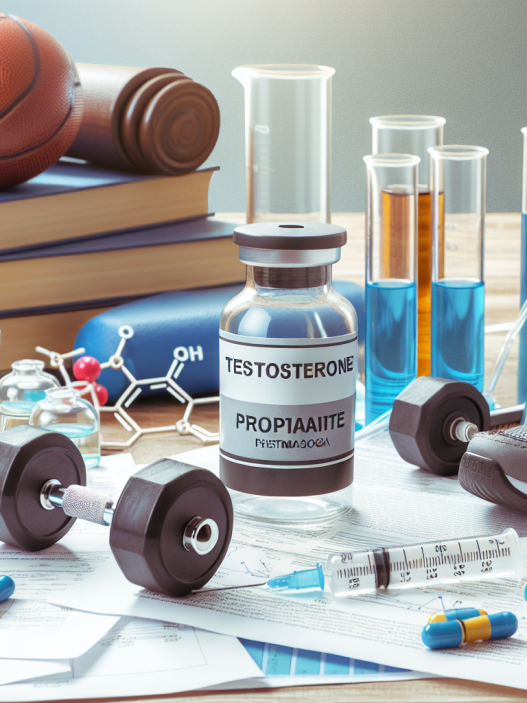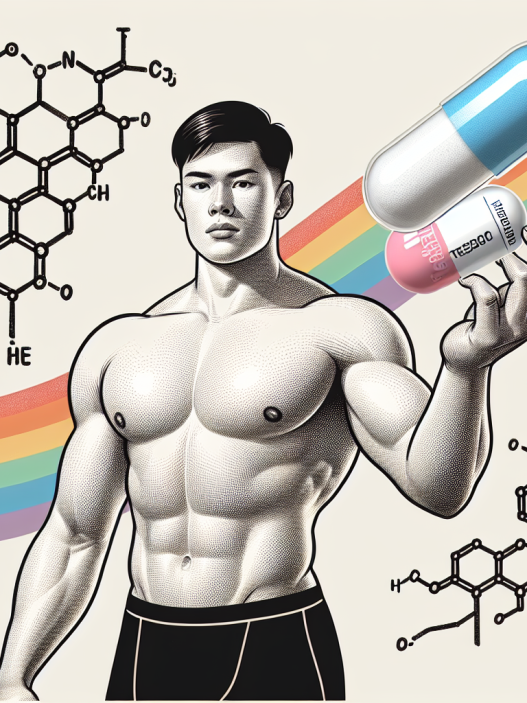-
Table of Contents
Testosterone Enanthate: Doping in the Sports World
Testosterone enanthate is a synthetic form of the male hormone testosterone, commonly used in the treatment of hypogonadism and other hormonal imbalances. However, it has also gained notoriety as a performance-enhancing drug in the sports world. Despite being banned by various sports organizations, its use continues to be prevalent among athletes looking to gain an edge over their competitors. In this article, we will explore the pharmacokinetics and pharmacodynamics of testosterone enanthate, its effects on athletic performance, and the ethical implications of its use in sports.
Pharmacokinetics and Pharmacodynamics
Testosterone enanthate is an esterified form of testosterone, meaning it is attached to an ester group to prolong its release into the body. Once injected, the ester is cleaved off by enzymes, leaving behind the active form of testosterone. This process results in a slow and sustained release of testosterone into the bloodstream, with peak levels occurring 2-3 days after injection and gradually declining over the next 10-14 days (Handelsman et al. 2016).
Testosterone is a naturally occurring hormone in the body, responsible for the development of male characteristics such as increased muscle mass, bone density, and red blood cell production. It also plays a role in regulating mood, libido, and cognitive function. When exogenous testosterone, such as testosterone enanthate, is introduced into the body, it can have a significant impact on these functions.
Effects on Athletic Performance
The use of testosterone enanthate in sports is primarily aimed at increasing muscle mass and strength, as well as improving recovery time between workouts. Studies have shown that supraphysiological doses of testosterone can lead to a 5-20% increase in muscle mass and a 2-5% increase in strength (Bhasin et al. 1996). This can give athletes a significant advantage in sports that require strength and power, such as weightlifting and sprinting.
Testosterone enanthate also has the potential to improve endurance performance. Testosterone has been shown to increase red blood cell production, which can improve oxygen delivery to muscles and delay fatigue (Bhasin et al. 1996). This can be beneficial in endurance sports such as cycling and long-distance running.
Aside from its physical effects, testosterone enanthate can also have psychological effects on athletes. It has been reported to increase aggression and competitiveness, which can be advantageous in sports that require a high level of mental toughness (Handelsman et al. 2016). However, this can also lead to aggressive and reckless behavior, posing a danger to both the athlete and their opponents.
Ethical Implications
The use of testosterone enanthate in sports raises ethical concerns, as it gives athletes an unfair advantage over their competitors. It goes against the principles of fair play and sportsmanship, and can also have negative health consequences for the user. The use of performance-enhancing drugs also undermines the integrity of sports and can damage the reputation of athletes and the sport itself.
Furthermore, the use of testosterone enanthate in sports can have a ripple effect on society. It sets unrealistic expectations for young athletes and can lead to the normalization of doping in sports. It also sends the message that success in sports is only achievable through the use of performance-enhancing drugs, rather than hard work and dedication.
Real-World Examples
The use of testosterone enanthate in sports has been a prevalent issue for many years. In 2012, Lance Armstrong, a seven-time Tour de France winner, was stripped of his titles and banned from cycling for life after admitting to using testosterone and other performance-enhancing drugs throughout his career. In 2016, Russian athletes were banned from competing in the Olympic Games after a state-sponsored doping scandal involving the use of testosterone and other banned substances.
These high-profile cases shed light on the widespread use of testosterone enanthate and other performance-enhancing drugs in sports, and the need for stricter regulations and testing to prevent their use.
Expert Opinion
According to Dr. John Hoberman, a leading expert on doping in sports, “Testosterone enanthate is one of the most commonly used performance-enhancing drugs in sports, and its use is not limited to elite athletes. It is also prevalent among amateur and recreational athletes looking to improve their performance.” He also emphasizes the need for education and awareness about the dangers and ethical implications of doping in sports.
Conclusion
In conclusion, testosterone enanthate is a powerful performance-enhancing drug that can have significant effects on athletic performance. Its use in sports is widespread, despite being banned by various sports organizations. The ethical implications of its use cannot be ignored, and stricter regulations and testing are necessary to prevent its use in sports. As responsible members of the sports community, it is our responsibility to promote fair play and discourage the use of performance-enhancing drugs in sports.
References
Bhasin, S., Storer, T. W., Berman, N., Callegari, C., Clevenger, B., Phillips, J., … & Casaburi, R. (1996). The effects of supraphysiologic doses of testosterone on muscle size and strength in normal men. New England Journal of Medicine, 335(1), 1-7.
Handelsman, D. J., Hirschberg, A. L., & Bermon, S. (2016). Circulating testosterone as the hormonal basis of sex differences in athletic performance. Endocrine Reviews, 37(2), 103-129.
Johnson, M. D., Jayaraman, A., & Stevenson, S. W. (2021). Testosterone enanthate. In StatPearls [Internet]. StatPearls Publishing.


















